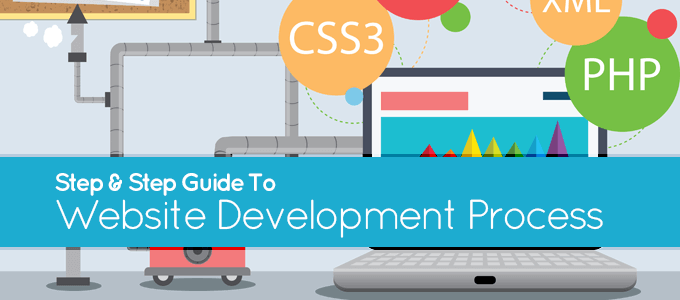Having a website for the business is just like having a personal room in the web space. Sometimes it meant far beyond than this. In the arena of the Internet, most of the things are getting are present on the web.
So, why not opt for your own website? But the problem is that a website development process is not a standardized service rather it is customized as per the specific demands of the businesses. Therefore, many of the first-timers are always confused to know the approach in designing and development of their website. So, we are here to help you in hard times.

Contents
Steps to Create Website from Scratch
There are basically 6 broad steps that ensure the designing and development of any particular right from the scratch. In this article, we will simply explain all of those 6 ways in the hierarchical order. Brace yourself and read to know the essentials of having a guaranteed successful website.
1. Information Assessment and Analysis
It is the foremost step in creating a website. Think about the niche purpose of your website, the demands of visitors, their age group, demographics, content and everything else that can contribute to the development of your website in any way.
The assessment process should be realistic and must include all of the essential information to ensure delivery of a state-of-the-art website. In order make it easier, you can consult with the designers and developers too.
Input: A detailed estimation of the theme, visitor requirements, and discussions.
Output: Realistic work plan, website budget, platform requirement, and final approval to the development firm.
2. Sitemap Planning
In this step, an initial layout of the prospective website will be created. It contains, but not limited to, the layout of navigation, image placement and specific area for each content.
It will act as a blueprint during the overall website design and development phase. A larger development project may require additional things in the sitemap but that can be added later, if needed.
Input: Analysis Report
Output: An overall requirement of the specifications and associated contributors.
3. Designing Phase
After the sitemap, here comes the main designing process. In this phase, the layout of the homepage, landing page, internal pages, and other areas are finalized. It is the crucial stage when the requirements of the target audience are taken into consideration along with the logo, images and color theme.
Besides, it is also the critical phase when you need to interact with the designers throughout the designing process. Ask your website design company to get you each and every update of the images and finalize design only when you are fully satisfied. After this step, the real development process starts.
Input: Requirement specifications, collaboration, review, consultation, and meetings.
Output: Basic color theme, design prototype, logo, home page, and perspective image.
4. Development Phase
Now it is the area where the actual role of programmers come. A team of developers will initiate the development process to convert the designs into responsive web pages. If the website is responsive, the developers may need to consult the designers for understanding the design functioning. During the entire development process, you should be able to track the status of development for indicating corrections, if any.
Input: CMS and requirement specification.
Output: Database driven functions, Coding documents, and a rough website.
5. Testing and Delivery
It is one of the important steps to consider after website development. You need to divide the testing part in two ways – one with the development part and another with some potential visitor for your website, maybe a non-technical friend. The testing experts are well-versed to find the glitches and bugs in the website.
If any of the potential bug or error is reported during the testing process, the developer will sort out that problem. It will continue until the website shows no results for glitches, bugs or other potential development threat.
One the development and testing part is over, you are here with a website to launch. The website will be hosted on a server along with the potential plugins to ensure the ease of working. Once again the website is tested again over the live panel to ensure final success before delivery.
Input: Domain and hosting registration, analysis/re-analysis reports, and content hosting,
Output: Fully functional live website out for public.
6. Maintenance
It is an extra phase of website development or it can be starting of an another business relationship. If your website is an ecommerce based, you will need to update products every now and them. Even if your website is CMS based, you will need to tackle with the problems of server maintenance, backup or other works that may arise in the future. So, ask your development firm how long they can assist you in maintenance.
We have tried including all of the important steps during the design and development phase of a website. So, what are you waiting for? Just make your mood and hire a good website development firm to mark your presence over the web.

It is also important to choose a fast and reliable hosting for the website. I strongly recommend rosehosting.com , because I host my websites on their SSD 2 vps hosting plan and I’m very pleased with the speed and reliability of my vps.